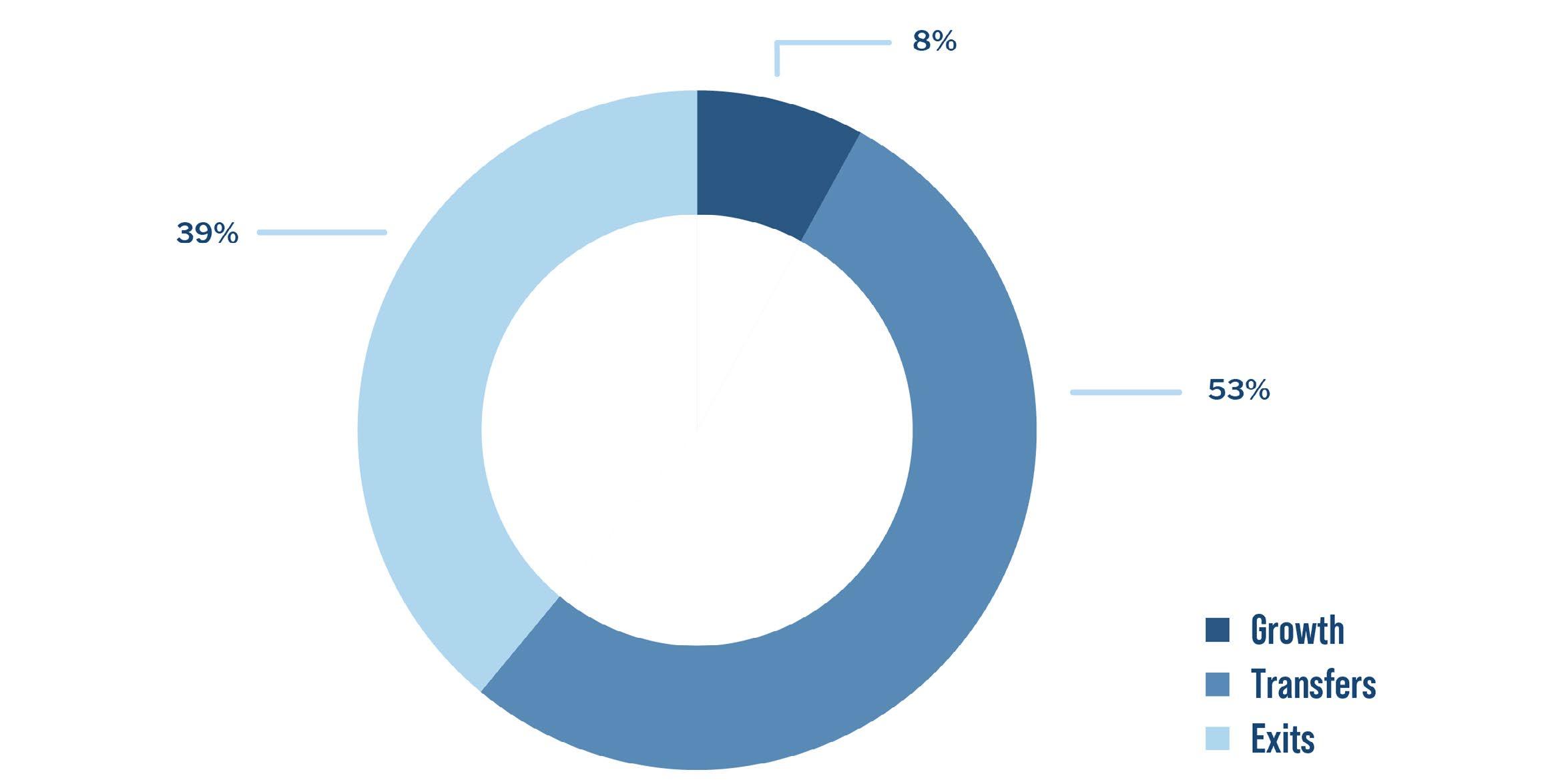
2 minute read
South Carolina Short-Term Employment Projections (2022-2024)
By Ashlyn Chastain – Workforce Insights Analyst
The Labor Market Information (LMI) Division of the South Carolina Department of Employment and Workforce is responsible for yearly short-term employment projections These projections cover two years and estimate the distribution of employees by industry and occupation based on the jobs needed to staff a worksite To comprehend this data, it's crucial to differentiate between numeric and percent changes. The former indicates an increase or decrease in job availability or employment, while the latter identifies the growth rate of industries and occupations over two years
LMI also produces data identifying which occupations and industries are growing or shrinking the fastest and at what rates they are expected to have the highest employment gains . Figure 1 shows projected annual job openings divided into three categories: openings due to industry growth, transfers between occupations, and exits from the labor force due to retirement or other reasons . Transfers account for more than half, exits for almost 40 percent, leaving eight percent (48,173) of openings due to the state's economic growth However, openings due to exits may also be caused by people leaving their jobs to pursue other career options, while transfers usually represent workers transitioning to different occupations Overall, South Carolina is expected to see 596,174 job openings through 2024
On the next page is Figure 2, which highlights the top ten occupations projected to have the largest employment gains from 2022 to 2024 More than half of these positions are expected to be in customer service, with a focus on the leisure and hospitality industry This sector took a significant hit during the COVID-19 pandemic but is now showing signs of recovery, which is critical for the state's economy given the prevalence of tourism destinations throughout the state There has also been an uptick in employment for registered nurses and home health care aides, which were also negatively affected by the pandemic
Occupational growth is influenced by several factors, and educational attainment plays a crucial role. Employers have raised their hiring requirements, making education even more important for jobseekers In terms of growth, Figure 3 shows that occupations requiring a doctoral or master’s degree are projected to experience the most growth, while those with no formal education, post-secondary non-degree award, associate degree, and bachelor’s degrees are expected to grow overall but not as much Occupations that require some college, but no degree are projected to decline, including computer user support specialists, teaching assistants, actors, and bookkeeping, accounting, and auditing clerks Growth rates for each level of education were calculated by dividing the total rate of growth for all related occupations by the total number of occupations
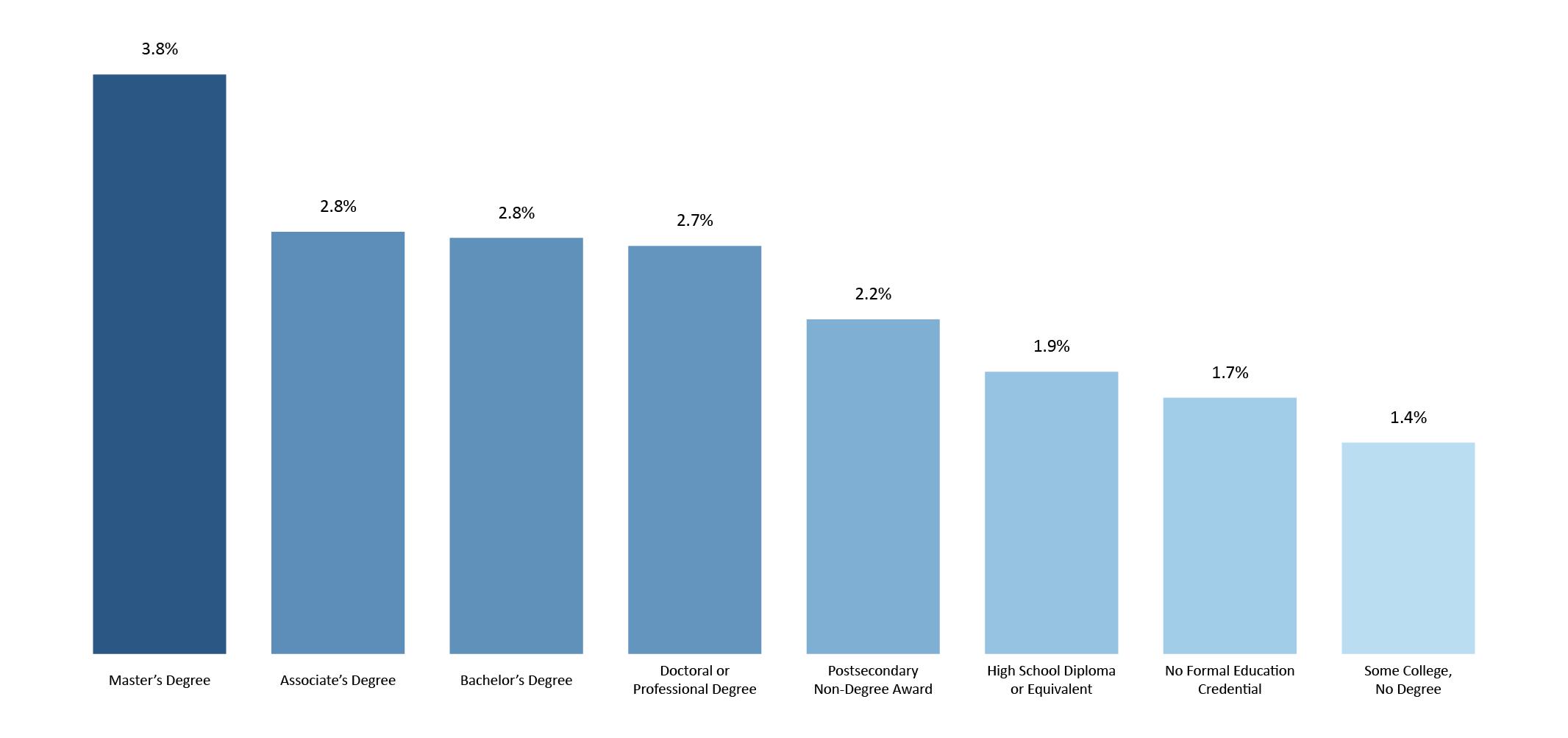
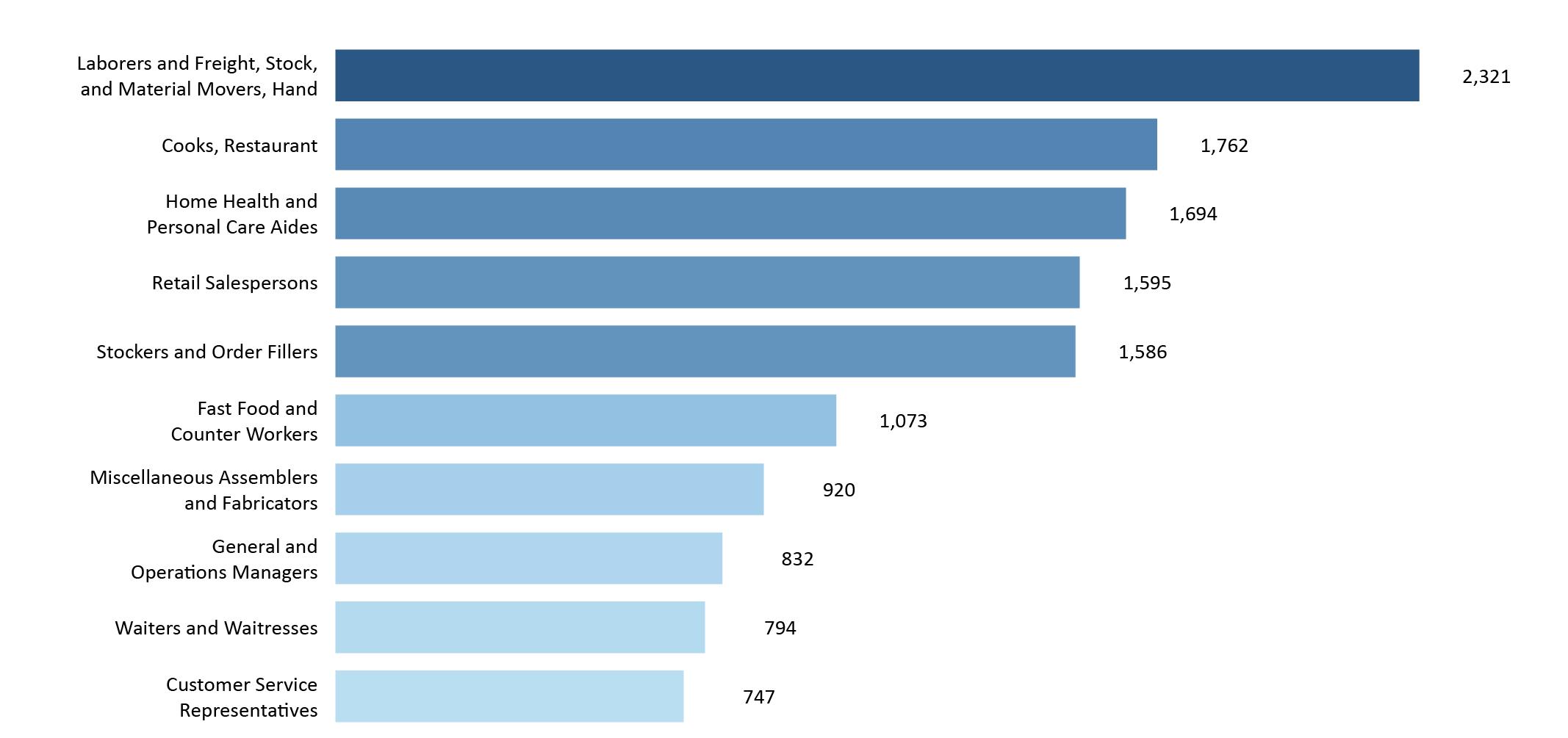
The North American Industry Classification System (NAICS) code is used to identify specific industries, and their future payroll estimates are available as well The fastest projected annual growth for industries is based on sectors (2-digit) as a baseline, but industry sub-sectors (3-digit) are also analyzed for comparison The health care and social assistance sector is expected to show the largest projected employment gains, reflecting a promising renewal.
Figure 4 highlights the sectors expected to experience the highest employment growth The results suggest a positive shift in the health care and social assistance industry, as it showcases the largest gain by a significant margin.
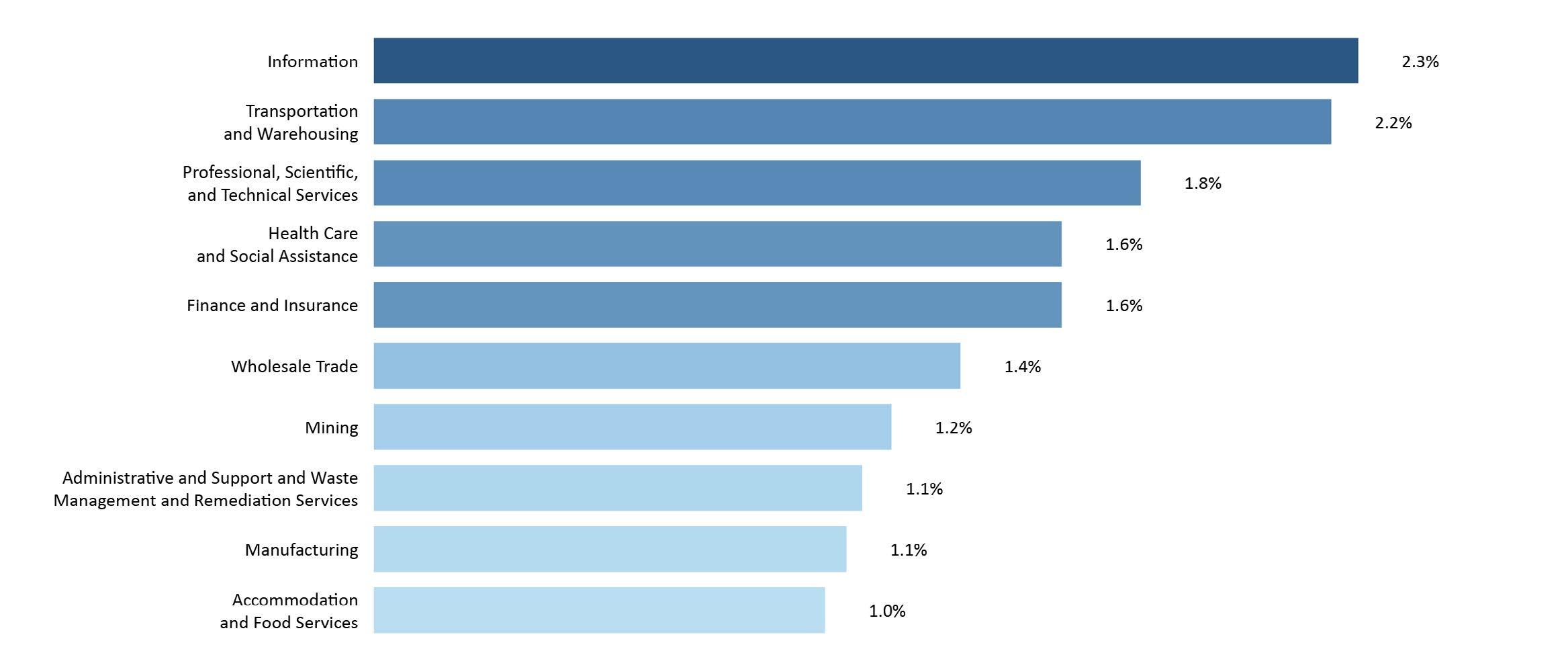
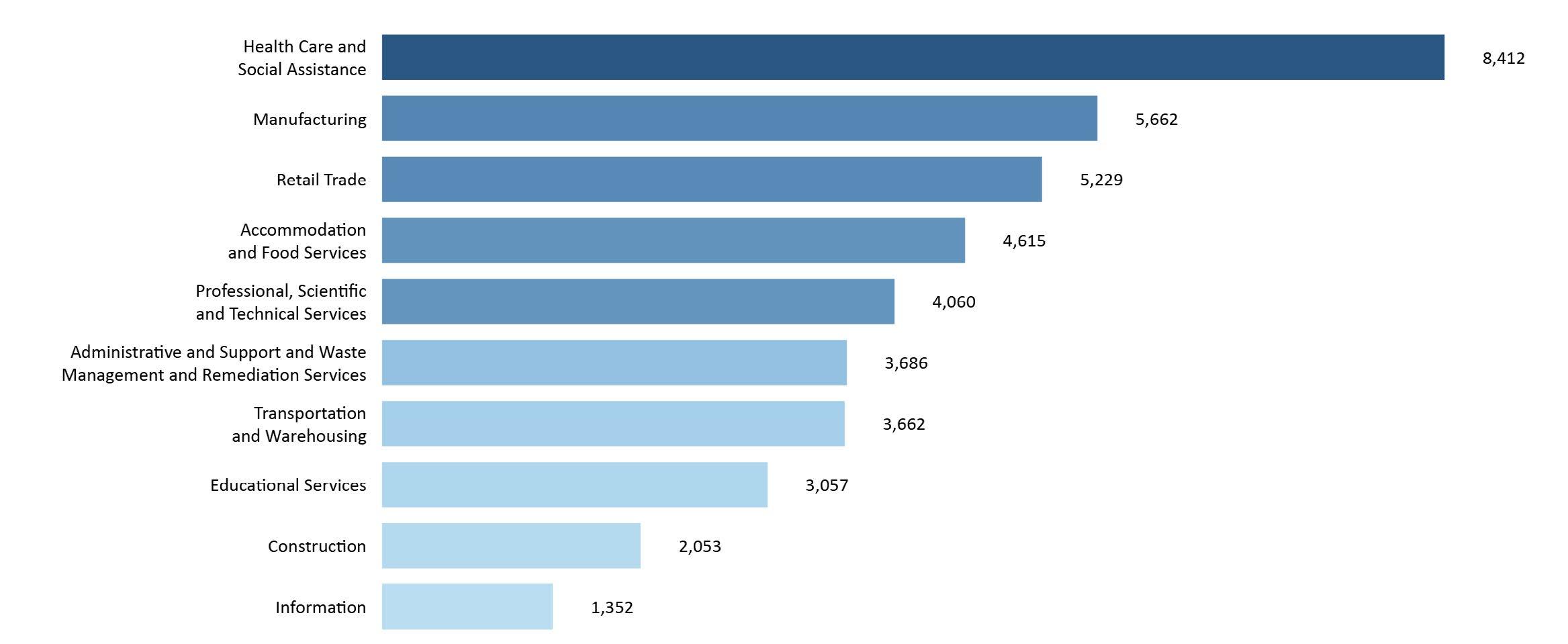
Finally, Figure 6 shows that Other Information Services is projected to be the fastest-growing 3-digit sub-sector on a relative basis It is important to note that these sub-sector industries are significantly smaller than others, which impacts the growth rate.
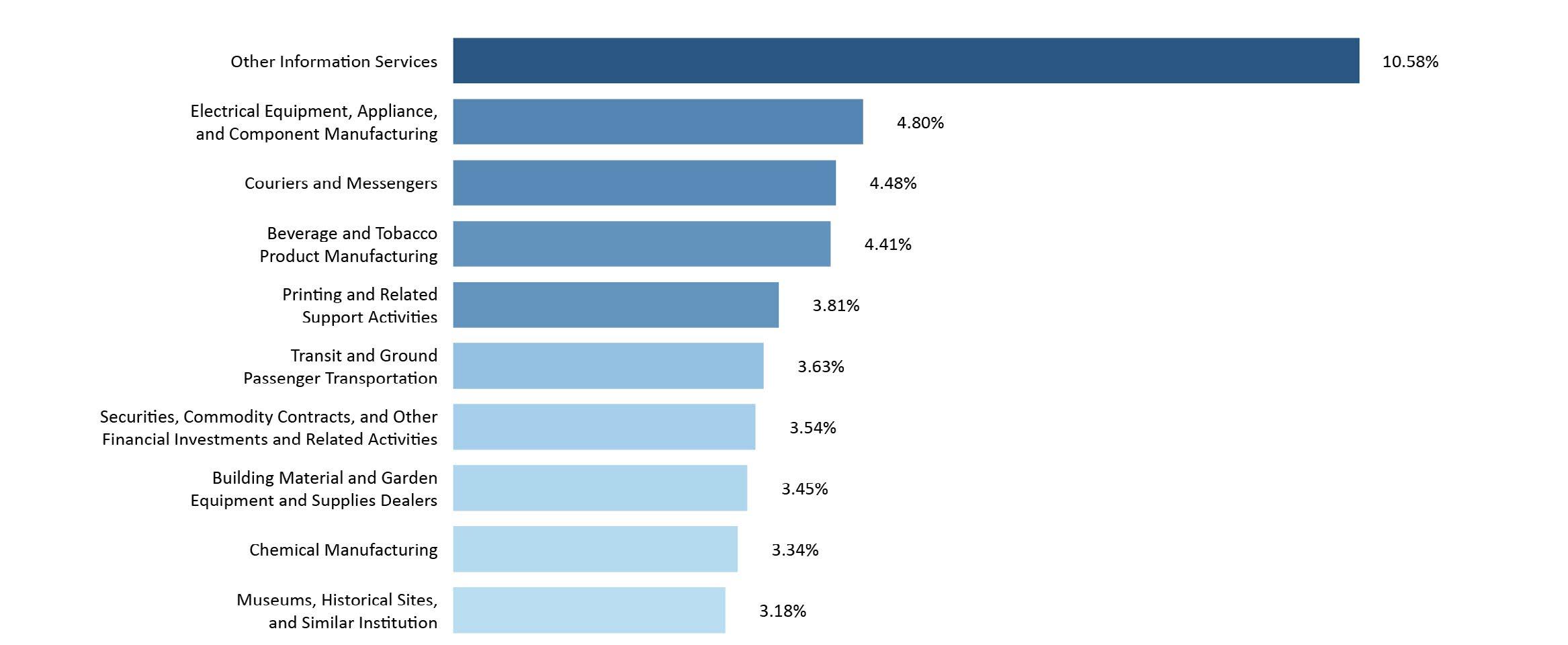
In summary, short-term projections indicate robust growth for South Carolina's economy and workforce, with payroll increases across most industries and occupations More than 48,000 jobs are expected to be created between 2022 and 2024, highlighting the opportunities and challenges in developing a workforce to meet demands Long-term projections will be available this summer for the 12 workforce development areas statewide Access to LMI’s projections dashboards and more information regarding this data can be found on our website under “Employment Projections ”





